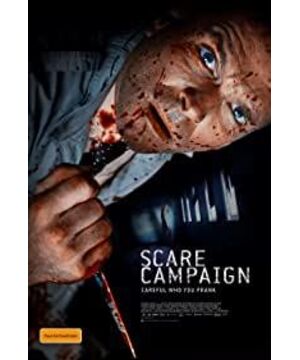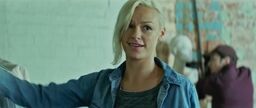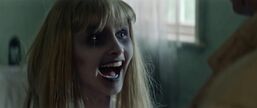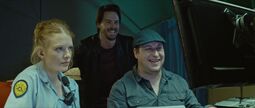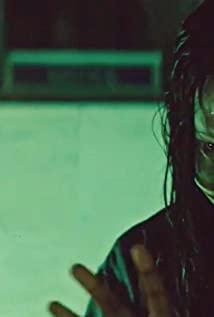1. In an empty and narrow corridor, the fluorescent lights overhead flicker from time to time due to the low pressure and are accompanied by a "buzz" sound. Sometimes the lights behind the characters in the play will go out one by one as they move forward, until it is pitch black.
2. A person A is walking along the corridor with a murder weapon in hand, while another person B is hiding in fear at the corner not far ahead. In this case, A is the perpetrator and B is the victim who avoids. In 80% of cases, when A reaches the corner and suddenly turns around, the camera gives B a hiding place, but B is no longer there; in 20% of cases, when A reaches the corner, the camera is still facing A. , but B has already attacked A first, in order to give himself time to escape further.
3. When character A is in a room, another vague figure appears outside the door behind A. When A turns his head, the figure is no longer there. At this time, there will be a sound of "whoosh", and character A will appear. There is zero chance of being able to see a silhouette when looking back.
4. When the character enters a slightly scary room, the door behind him will slowly open and make a "swoosh" sound, and the camera will slowly move towards the door with the character's gaze.
5. The perpetrator chases into a room, the victim hides in the wardrobe, the camera will be the hiding person's perspective through the slit of the wardrobe, then the camera will turn to the outside of the wardrobe, and then the perpetrator will suddenly open the wardrobe The door, at this time 99% of the cases are that the perpetrator is no longer there, or the other party did not open the closet he was hiding in, which mostly implies that the hider can finally escape; 1% of the cases are the hider Found and then killed.
6. When walking in an empty corridor or street, character A finds that someone is following him behind him, and when he turns his head, the probability of finding someone or no one is 50%. In the case of people, eventually character A will be able to escape from the scene; when there is no one, usually the follower will start on character A at the next corner.
7. When the victim flees to an elevator with an open door, the perpetrator will chase after him. The victim who enters the elevator will frantically press the close button. In 100% of the cases, the victim can successfully close the elevator, while the victim The victim could only look at the ladder and sigh, and had to climb the stairs to catch up.
8. When character A gets on the elevator, when the door is about to close, a human hand will suddenly stop the elevator door from closing, and character B will enter the elevator. If character A is the secondary character, the next shot will be character B walking out of the elevator calmly, with character A lying in the elevator behind him; if character A is the protagonist, the next shot will be A and B in the elevator, At the floor of A, A nervously got out of the elevator, but character B did not get out of the elevator.
9. When Person A hears an abnormal noise outside the door, he opens the door and looks left or right. Usually, there is no one in the direction TA is looking. When looking in the opposite direction, one situation is that the person is already there, and character A is knocked out or killed; the other is that there is no one, but when TA closes the door and returns to the room, the other person is already in the room.
10. When the escapee is about to get in the car and run away, one situation is that the key cannot be found; another situation is that even if there is a key, it cannot be started; another situation is that the car can be started, but the pursuit is hidden in the back seat The runner will sit up slowly, and if the runaway is a supporting role, he will be killed, and if he is the main character, he will be stunned.
11. When the victim finally escaped, he basically got into the car of the perpetrator's accomplice in the middle of the ride; or when he ran to a house for help, he also "just got out of the wolf's den and entered the tiger's den".
12. The victim was dying, almost in a coma. At this time, a light appeared in front of the TA. Someone came, and the TA was rescued. The next scene was that the TA was still lying in the same place. It turned out to be a dream or hallucination.
13. The victim fought back and finally knocked out the perpetrator. When the victim was exhausted and turned to leave, the perpetrator would slowly stand up behind him. The chance of the perpetrator being completely solved in one go is 0.1. %.
14. There are no brains. Several secondary male and female characters on the brain will be in the woods or rooms far away from the protagonist. When he saw blood dripping onto TA's body, he shouted, and then he was also killed. The camera cut back to the space where the protagonist was in the TA's scream. People in the room would feel that they heard something, but then there was silence. Let them continue talking again.
15. Hearing the abnormal noise outside the house, the male protagonist usually said that in order to protect the female protagonist, let her stay in the house and go out to see for himself. His face was pressed against the glass of the door, then slowly slid to the ground, revealing the perpetrator behind him.
Here are just some of the bridges that appear frequently. Excellent horror films can make good use of the bridges used, rather than simply stacking and scaring with sound effects, and to make the film logic as smooth as possible , and the level of blood and the fidelity of killing must be meticulous. Most horror films still use model special effects instead of computer special effects, so the work of special effects artists and makeup artists is indispensable in a successful horror film. It is not easy to make a good horror film, especially in front of today's well-informed movie fans. I am looking forward to this year's "Saw 8" and other surprises.
View more about Scare Campaign reviews


